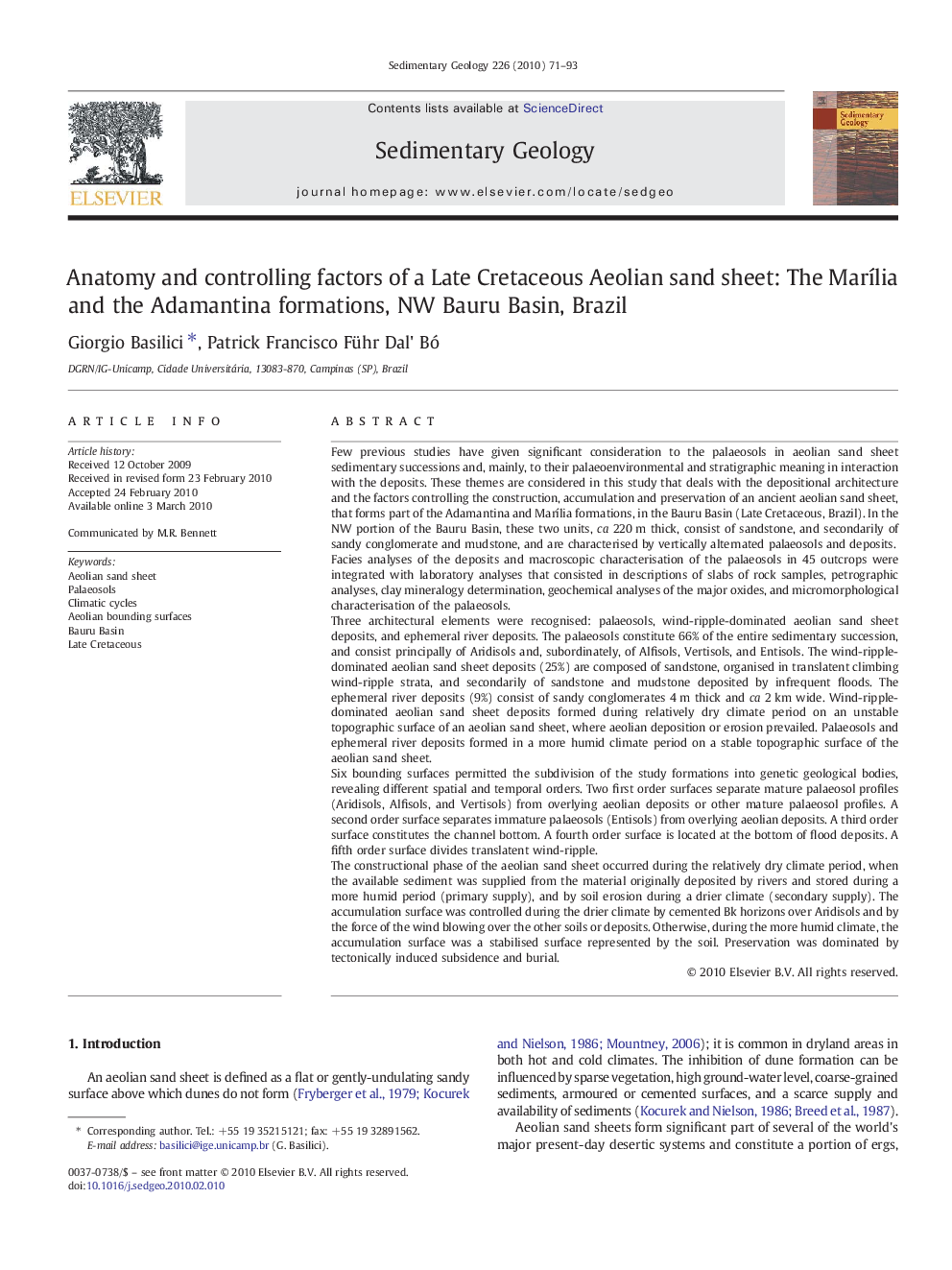| کد مقاله | کد نشریه | سال انتشار | مقاله انگلیسی | نسخه تمام متن |
|---|---|---|---|---|
| 4690183 | 1636126 | 2010 | 23 صفحه PDF | دانلود رایگان |

Few previous studies have given significant consideration to the palaeosols in aeolian sand sheet sedimentary successions and, mainly, to their palaeoenvironmental and stratigraphic meaning in interaction with the deposits. These themes are considered in this study that deals with the depositional architecture and the factors controlling the construction, accumulation and preservation of an ancient aeolian sand sheet, that forms part of the Adamantina and Marília formations, in the Bauru Basin (Late Cretaceous, Brazil). In the NW portion of the Bauru Basin, these two units, ca 220 m thick, consist of sandstone, and secondarily of sandy conglomerate and mudstone, and are characterised by vertically alternated palaeosols and deposits.Facies analyses of the deposits and macroscopic characterisation of the palaeosols in 45 outcrops were integrated with laboratory analyses that consisted in descriptions of slabs of rock samples, petrographic analyses, clay mineralogy determination, geochemical analyses of the major oxides, and micromorphological characterisation of the palaeosols.Three architectural elements were recognised: palaeosols, wind-ripple-dominated aeolian sand sheet deposits, and ephemeral river deposits. The palaeosols constitute 66% of the entire sedimentary succession, and consist principally of Aridisols and, subordinately, of Alfisols, Vertisols, and Entisols. The wind-ripple-dominated aeolian sand sheet deposits (25%) are composed of sandstone, organised in translatent climbing wind-ripple strata, and secondarily of sandstone and mudstone deposited by infrequent floods. The ephemeral river deposits (9%) consist of sandy conglomerates 4 m thick and ca 2 km wide. Wind-ripple-dominated aeolian sand sheet deposits formed during relatively dry climate period on an unstable topographic surface of an aeolian sand sheet, where aeolian deposition or erosion prevailed. Palaeosols and ephemeral river deposits formed in a more humid climate period on a stable topographic surface of the aeolian sand sheet.Six bounding surfaces permitted the subdivision of the study formations into genetic geological bodies, revealing different spatial and temporal orders. Two first order surfaces separate mature palaeosol profiles (Aridisols, Alfisols, and Vertisols) from overlying aeolian deposits or other mature palaeosol profiles. A second order surface separates immature palaeosols (Entisols) from overlying aeolian deposits. A third order surface constitutes the channel bottom. A fourth order surface is located at the bottom of flood deposits. A fifth order surface divides translatent wind-ripple.The constructional phase of the aeolian sand sheet occurred during the relatively dry climate period, when the available sediment was supplied from the material originally deposited by rivers and stored during a more humid period (primary supply), and by soil erosion during a drier climate (secondary supply). The accumulation surface was controlled during the drier climate by cemented Bk horizons over Aridisols and by the force of the wind blowing over the other soils or deposits. Otherwise, during the more humid climate, the accumulation surface was a stabilised surface represented by the soil. Preservation was dominated by tectonically induced subsidence and burial.
Journal: Sedimentary Geology - Volume 226, Issues 1–4, 15 April 2010, Pages 71–93